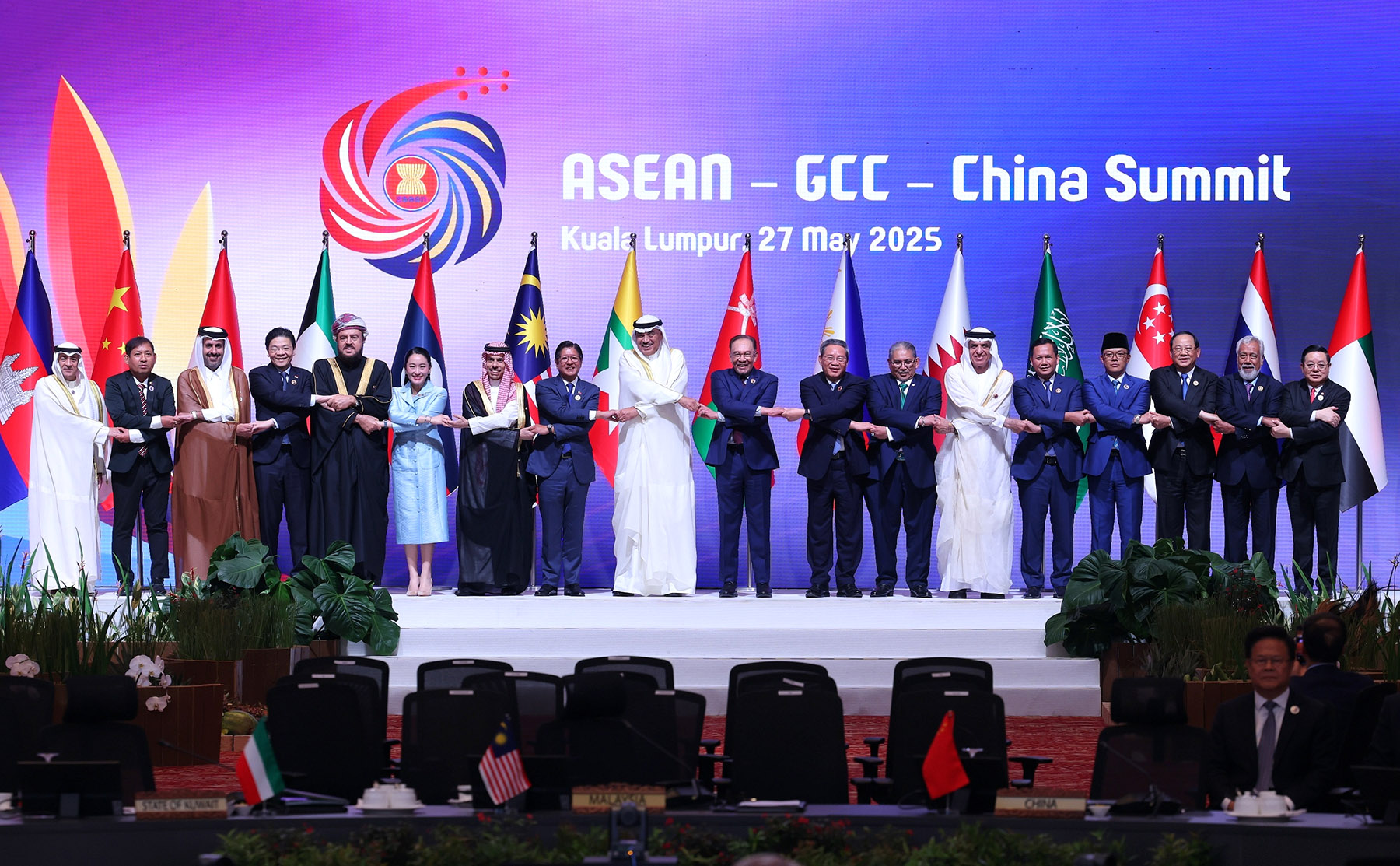
The Kuala Lumpur Declaration on ASEAN 2045 unveiled on Monday at the 46th ASEAN Summit in the Malaysian capital indicates the Association of Southeast Asian Nations is putting sustainable and inclusive development at the forefront for the next 20 years.
Anwar Ibrahim, prime minister of Malaysia, this year's rotating chair of ASEAN, said, "The future we seek must rest on foundations of sustainability and inclusion. ASEAN's integration must be genuinely people-centered. That means closing development gaps, raising standards of living and investing in the human spirit and potential of all our citizens."
READ MORE: Premier Li: New era starts for trilateral cooperation
With that vision for the following two decades, anchored in realism, animated by resolve and made possible by trust, ASEAN has demonstrated it is clearheaded that seeking common development has been and should continue to be a core mission of all its member states so that they can better respond to emerging challenges.
What gives the blueprint practical meaning is the ASEAN Community Vision 2045, an action plan the grouping adopted on the same day following the declaration, along with its accompanying strategic plans across four pillars, namely political-security community, economic community, socio-cultural community, and ASEAN connectivity.
As ASEAN Secretary-General Kao Kim Hourn told the media, the ASEAN Community Vision 2045 is meant to serve as a pragmatic 20-year strategic road map to guide the region's development amid global uncertainties. "These four strategic plans are designed to guide ASEAN on how to prioritize its work while upholding unity, solidarity, and ASEAN centrality," he said, adding that the road map also recognizes the need to work closely with external partners, including dialogue, sectoral and global partners.
China and ASEAN have been each other's largest trading partner for years. With the conclusion of negotiations on Version 3.0 of the China-ASEAN Free Trade Area, the two sides look set to promote the China-ASEAN community with a shared future at a higher level.
And the to-do list settled by the summit reflects the potential for the two sides to deepen their cooperation in relevant fields tapping into their structural complementarity.
The four pillars of ASEAN development for the next 20 years also coincide with the major fields in which the two sides agree to strengthen their coordination, collaboration and communication. That is also in line with the joint pursuit of most developing countries, including China, to uphold their strategic autonomy — including in the financial and trade sector — to safeguard their legal rights and interests in the face of the rise of unilateralism and hegemony.
Strengthening across-the-board cooperation with China is of strategic significance to helping ASEAN realize its aspiration of becoming a prosperous single market with a highly skilled and inclusive workforce, productivity and innovation-driven growth, while incorporating sustainability throughout the value chain.
China, along with other emerging market economies, hopes that through the new updated vision ASEAN can develop into a major player in the global economy, anchored on sustainable growth and good governance, empowered by advanced technologies, and responsive to emerging opportunities, becoming an important power maintaining regional peace and stability and contributing to common development and global economic growth.
ALSO READ: 'Landmark' free trade deal with ASEAN fosters enduring common prosperity
Taking advantage of its close connection with the world economy as a global manufacturing base, China is also willing to serve as a bridge between ASEAN and the rest of the world.
Premier Li Qiang's participation in a meeting of ASEAN, the Gulf Cooperation Council and China in Kuala Lumpur on Tuesday is a testament to that. As Li said, China as well as ASEAN and GCC countries are participants in and beneficiaries of economic globalization. They should enhance coordination and jointly uphold true multilateralism.
The inaugural trilateral meeting, proposed by Malaysia, carries special significance and is likely to become a new platform to consolidate the strength of the Global South, promote cross-regional common development and facilitate mutual learning between civilizations.


